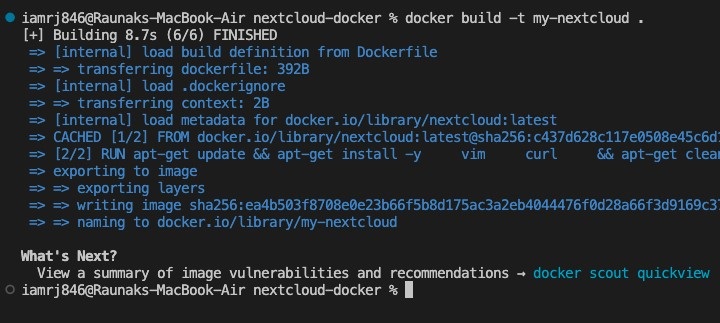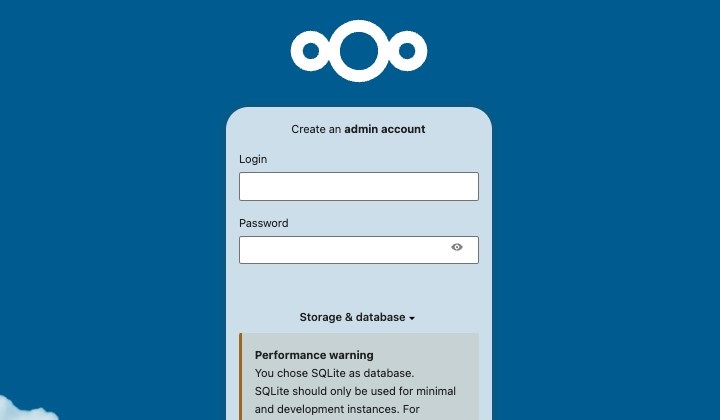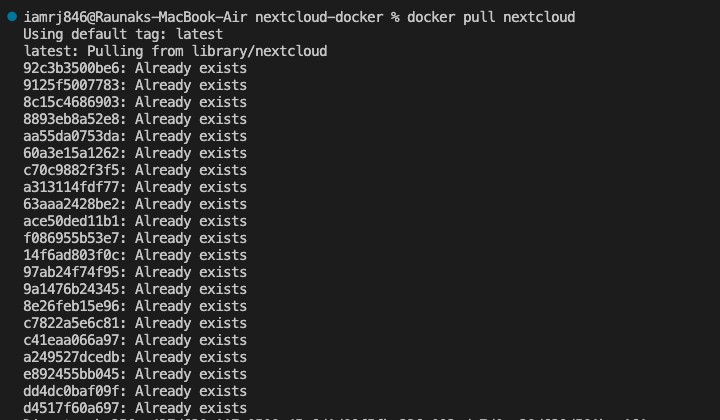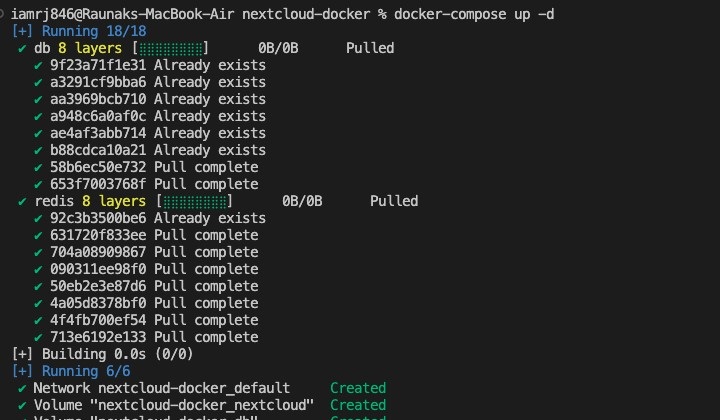
- Docker - Home
- Docker - Overview
- Docker - Installing on Linux
- Docker - Installation
- Docker - Hub
- Docker - Images
- Docker - Containers
- Docker - Registries
- Docker - Compose
- Docker - Working With Containers
- Docker - Architecture
- Docker - Layers
- Docker - Container & Hosts
- Docker - Configuration
- Docker - Containers & Shells
- Docker - Dockerfile
- Docker - Building Files
- Docker - Public Repositories
- Docker - Managing Ports
- Docker - Web Server
- Docker - Commands
- Docker - Container Linking
- Docker - Data Storage
- Docker - Volumes
- Docker - Networking
- Docker - Security
- Docker - Toolbox
- Docker - Cloud
- Docker - Build Cloud
- Docker - Logging
- Docker - Continuous Integration
- Docker - Kubernetes Architecture
- Docker - Working of Kubernetes
- Docker - Generative AI
- Docker - Hosting
- Docker - Best Practices
- Docker - Setting Node.js
- Docker - Setting MongoDB
- Docker - Setting NGINX
- Docker - Setting ASP.Net
- Docker - Setting MySQL
- Docker - Setting Go
- Docker - Setting Rust
- Docker - Setting Apache
- Docker - Setting MariaDB
- Docker - Setting Jupyter
- Docker - Setting Portainer
- Docker - Setting Rstudio
- Docker - Setting Plex
- Docker Setting - Flame
- Docker Setting - PostgreSql
- Docker Setting - Mosquitto
- Docker Setting - Grafana
- Docker Setting - Nextcloud
- Docker Setting - Pawns
- Docker Setting - Ubuntu
- Docker Setting - RabbitMQ
- Docker - Setting Python
- Docker - Setting Java
- Docker - Setting Redis
- Docker - Setting Alpine
- Docker - Setting BusyBox
- Docker Setting - Traefik
- Docker Setting - WordPress
- Docker Useful Resources
- Docker - Quick Guide
- Docker - Useful Resources
- Docker - Discussion
Docker - Setting Nextcloud
Nextcloud is a free, open-source, and self-hosted cloud storage platform that allows users to store, share, and sync their files, contacts, etc., across multiple devices.
Like Google Drive and Dropbox, it enables file sharing and collaboration but with the extra benefit of complete control of data and infrastructure. However, setting up Nextcloud for different environments can pose a real challenge in terms of both management and scalability.
Here comes Docker where you can containerize your Nextcloud instance to behave the same way across all the production environments without deploying it separately for each environment. This chapter takes you through dockerizing Nextcloud so that you can easily manage it across multiple environments.
Prerequisites for Dockerizing Nextcloud
Make sure you have the following before starting this guide −
- Docker − Make sure you have Docker installed on your local machine. It would be beneficial if you have a basic knowledge of Docker too.
- Docker Compose − Make sure you have Docker Compose installed in your machine if you want to set up Nextlcloud with Docker via Docker Compose.
- Command Line Interface (CLI) − A basic knowledge of the Command Line Interface or CLI and its commands would help you better understand this guide.
- Text Editor − A text editor like VSCode or Sublime Text would be required for writing config files.
Setting up a Nextcloud Project
Before installing Nextcloud on Docker, you can create a Nextcloud project on your local machine. This will work as a Docker Image for Nextcloud.
Step 1: Create a Project Directory
Create a project folder or directory that will store all the files related to Nextcloud. Use the following command on CLI to create the directory.
# This command will create a folder named nextcloud-docker $ mkdir nextcloud-docker # This command will take you inside the folder $ cd nextcloud-docker

Step 2: Create a basic Dockerfile
Next, you need to create a basic docker file which will be populated later on. A Dockerfile is a script that holds a set of instructions and is used as a Docker image.
# Create a Dockerfile in your project directory $ touch Dockerfile

Open your Dockerfile in any text editor and add the following content to it −
# Base image for Nextcloud FROM nextcloud:latest # Install any additional dependencies (optional) RUN apt-get update && apt-get install -y \ vim \ curl \ && apt-get clean # Copy your custom configuration files (if any) # COPY config/ /var/www/html/config/ # Expose the default Nextcloud port EXPOSE 80
This Dockerfile exposes the port 80 and sets the base image to the Nextcloud image.
Step 3: Build a custom Docker Image
Now that you have created your Dockerfile, you can create your own custom Docker image with the following command −
# Build the custom Nextcloud Docker image named nextcloud $ docker build -t my-nextcloud .

Step 4: Run the Nextcloud container
$ docker run -d --name nextcloud -p 8080:80 my-nextcloud

Where,
- -d − represents the detached mode
- --name nextcloud − represents the name of your container
- -p 8000:80 − mapping of your localhost port (8000) to the Nextcloud container"s port (80). On visiting http://localhost:8080, you are accessing Nextcloud"s container
- my-nextcloud − name of the docker image that is used to create the container

Using a pre-built Docker Image
Instead of creating a custom project and docker image to install Nextcloud in Docker, you can use the official Docker image for Nextcloud which is pre-built and ready to use.
Step 1. Pull the Nextcloud Image
Before running a Nextcloud container, you need to pull the pre-built official Docker image.
$ docker pull nextcloud

Step 2: Run the Nextcloud Container
Once you pull the Docker image, it"s time to run the Nextcloud container.
$ docker run -d --name nextcloud -p 8080:80 nextcloud

This will run the Nextcloud container on localhost port 8000 which is mapped with the Docker container port 80.
Setting up Nextcloud using Docker Compose
Step 1. Create a .env file
Create an .env file to store all the database environment variables. You can directly use them in your config file too but exposing your env variables is not recommended due to security reasons.
$ touch db.env
Add the following environment variables in this file. You can later add the path of this file in your config file.
MYSQL_ROOT_PASSWORD: rootpassword MYSQL_DATABASE: nextcloud MYSQL_USER: nextcloud MYSQL_PASSWORD: nextcloudpassword
Step 2. Create a docker-compose.yml file
Next, create the docker-compose.yml file in your nextcloud-docker directory.
$ touch docker-compose.yml

Your file structure will look like this −
nextcloud-docker/ Dockerfile db.env docker-compose.yml
Step 3: Populate .yml file
Add the following configuration to your docker-compose.yml file.
version: "3"
services:
db:
image: mariadb
restart: unless-stopped
command: --transaction-isolation=READ-COMMITTED --binlog-format=ROW --innodb-file-per-table=1 --skip-innodb-read-only-compressed
volumes:
- db:/var/lib/mysql
env_file:
- db.env
redis:
image: redis
restart: always
command: redis-server --requirepass your_redis_password
app:
image: nextcloud:latest
restart: unless-stopped
ports:
- 8080:80
links:
- db
- redis
volumes:
- nextcloud:/var/www/html
environment:
- MYSQL_HOST=db
- REDIS_HOST_PASSWORD=your_redis_password
env_file:
- db.env
depends_on:
- db
- redis
volumes:
db:
nextcloud:
- Version 3 − This is the stable version of the docker-compose used.
- Services − Services represent the separate containers that make up this application
- db − This represents the database used in the service, MariaDB in this case. The database is set to restart unless stopped explicitly. Volumes represent the docker volume for permanent data storage to prevent data loss once the container is deleted. The "env-file" is the location of the db.env file where all the db-related environment variables have been added.
- redis − This service uses using Redis server for caching.
- app − This is the Nextcloud app image which runs on port 80 and is mapped to localhost port 8000. MariaD and Redis services are linked and the volume"s name is Nextcloud.
- volumes − These are the docker volumes for permanently storing the data. Two volumes named "db" and "nextcloud" are used for storing MariaDB and app data.
Step 4: Run docker-compose.yml file
Run your docker-compose.yml file using the following command:
$ docker-compose up -d

Conclusion
You have successfully dockerized your Nextcloud container, created a docker image, and ran it inside your docker container ensuring consistency across different environments. This approach allows you to easily update your docker instance by simply pulling your updated images and redeploying your container. Modularity, security, portability, and isolation are the key features provided by this approach.
FAQs on Setting Nextcloud in Docker
In this section, we have collected a set of Frequently Asked Questions on Setting Nextcloud in Docker followed by their answers.
1. Can I change the database from MariaDB to any other database like PostgreSQL?
Yes, you change your database from MariaDB to any other database like PostgreSQL. All you need to do is change the "db" configuration in the docker-compose.yml file.
Change the db image from MariaDB to PostgreSQL. You will also need to change the environment variables accordingly in the db.env file.
2. How can I diagnose and fix performance problems in a dockerized Nextcloud system?
To begin, use docker logs <container_name> to examine the container logs for the database and Nextcloud containers. Docker stats can be used to track resource consumption and identify any performance issues. Increasing the amount of RAM and CPU that are available or setting Redis up for greater caching are common ways to boost speed.
3. If Nextcloud operates in a Docker container, how can I manage file permissions there?
File permissions on your host computer might need to match the user and group IDs of the container when using Docker to run Nextcloud.
By changing the ownership of the Docker volumes or by adding the user directive to your Dockerfile or docker-compose.yml file, you may control permissions.